UNESCO world heritage site is a movement started after world war I to conserve and protect the heritage. The UNESCO world heritage convention was started in 1972 and it acknowledges the heritage of cultural or natural importance from the nominated sites by their respective nations which are the signatories to the convention. The list included 12 heritage sites in its inaugural year and now there are more than 1000 buildings on the list from 165 different countries.
Here is the list of 5 heritage sites of India recognized by the UNESCO World Heritage Convention.
Taj Mahal
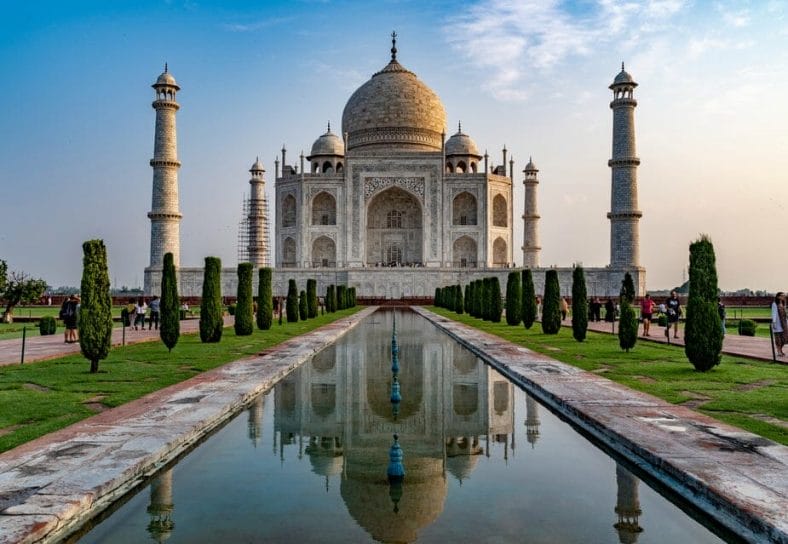
This awe-inspiring Mughal architecture incarnation is admired and appreciated worldwide. Located on the southern bank of the Yamuna river in Agra, it is a monument embracing symmetric architecture and landscape design. It is a mausoleum complex built by emperor Shahjahan in the memory of his third wife Mumtaz Mahal around the 17th century. It is a blend of Persian, Indian, and Islamic architectural styles.
The main mausoleum has similar facades on all four sides with verses from Holy Quran adorning the white marble. It was added to the UNESCO world heritage sites in 1983 as a cultural property. No wonder it is one of the seven wonders of the world, as it is the finest demonstration of beauty and grace interwoven in the form of a physical structure.
Ajanta and Ellora
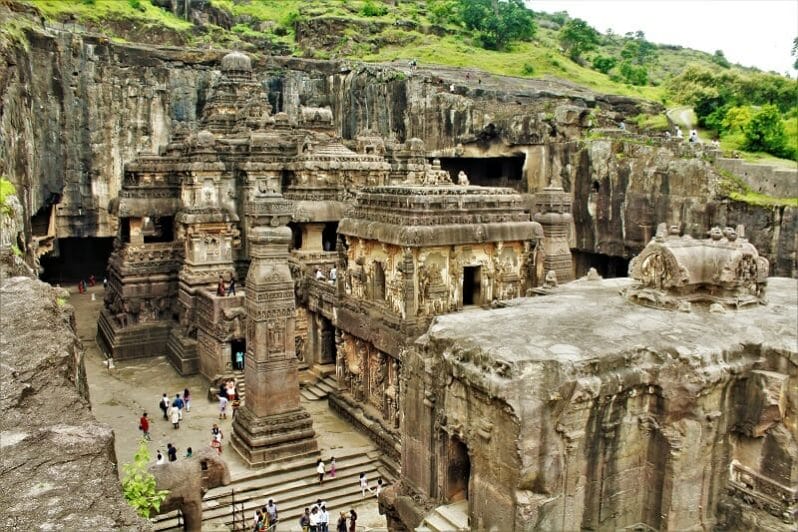

These caves located in Aurangabad, Maharashtra, are among the most famous tourist destinations in India. The Ajanta caves are the Hindu and Buddhist caves built in two phases in the period of emperor Ashoka and then in the Gupta period. The Ellora caves are a cultural blend of Hinduism, Buddhism, and Jainism. The rock-cut architecture is astonishing for the time it was conceived – around the 2nd century.
The intricate detailing of sculptures and fresco paintings depict the religious and cultural aspects of India. This heritage site is an intriguing visit for the history-enthusiasts as the construction details and architecture is reflective of the civilization of India. The Ajanta and Ellora caves were the first to be added to the list of UNESCO world heritage sites from India.
Khajuraho
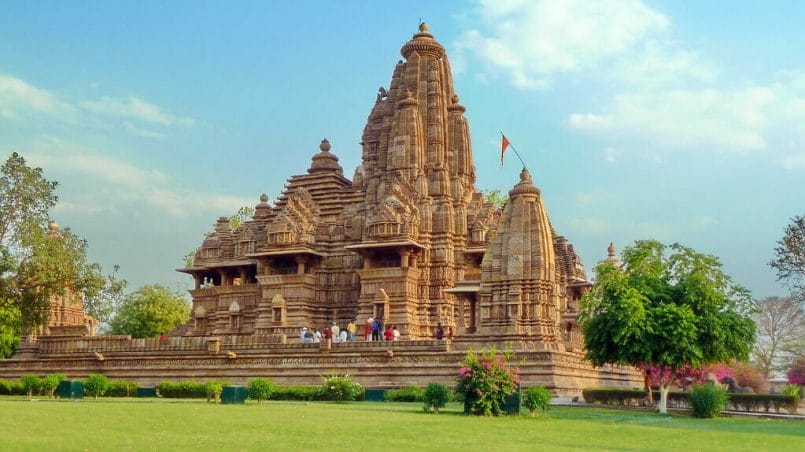
Khajuraho is a group of monuments of Hindu and Jain’s temples erected by the Chandela Dynasty in the Chhatarpur district of Madhya Pradesh. These are famous for their fusion of architecture and sculpture which is appropriately depicted in Kandariya Mahadev Temple; one fine part of the Khajuraho group.
Initially, this heritage site had 85 temples out of which only 25 have survived to date and are constructed in the Nagara style of architecture. It was announced as a UNESCO world heritage site in 1982 due to its aesthetically pleasing and culturally rich architecture. It is a creation that is reflective of the Chandela culture that existed before the Muslim invasion of India.
Sun temple
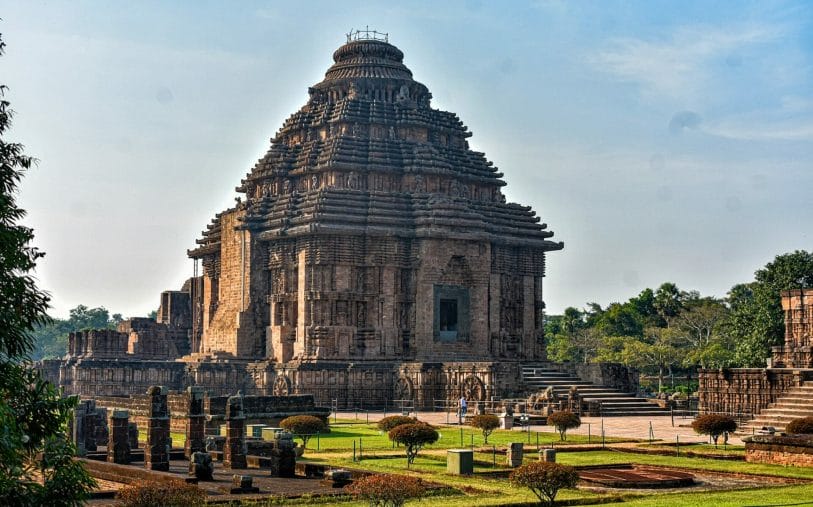
Located in Konark, Odisha, this 13th-century heritage site was conceived in the form of a chariot of Surya( Sun God) with 24 wheels and is heavily and intricately detailed. The chariot temple or also known as the black pagoda is led by seven horses and made out of stone carvings. It was constructed by King Narasimhadeva I of the Eastern Ganga dynasty using oxidized weathered ferruginous-colored sandstone.
It follows Kalinga-style architecture and is one of the most renowned temples of India and is visited by lakhs of devotees every year. The temple is oriented towards the east for the entrance to be embraced by the first rays of the sun in the morning. It became a UNESCO world heritage site in 1984 as a cultural property.
Rani ki vav, Gujarat
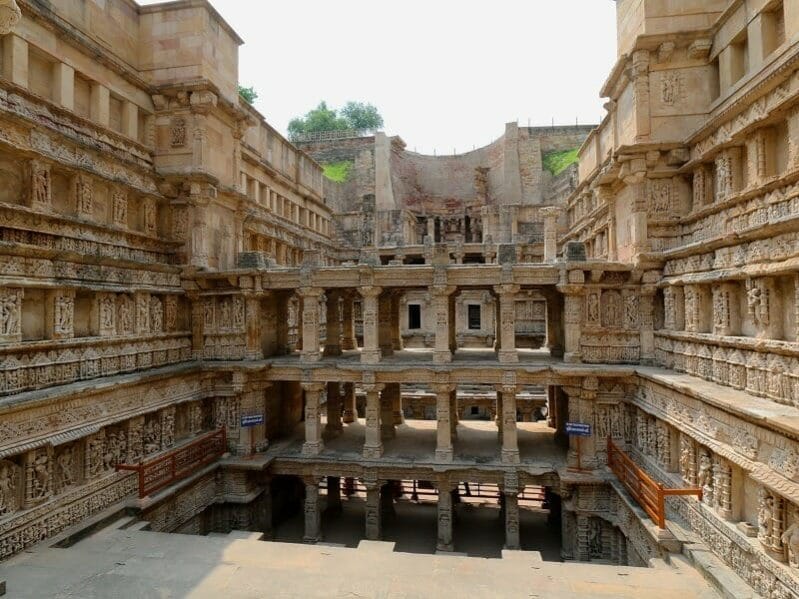
It is a Queen stepwell in the city of Patan in Gujarat on the banks of the Saraswati river. The construction of this stepwell is attributed to the wife of Chalukya King Bhima I – Queen Udayamati. It was restored in the 1980s by the Archaeological Survey of India and inscribed as a UNESCO world heritage site in 2014. The stepwell is famous for its size and scale with more than 500 sculptures of deities.
It is conceived as an inverted temple with a division of stairs into seven levels. It is one of the finest examples of Stepwell architecture reflecting the beauty and detailing of the construction technique. It follows Maru- Gurjara architectural style and was built by skilled craftsmen in stepwell construction. The 500 major sculptures and many minor ones are erected referring to the different literary works.




















